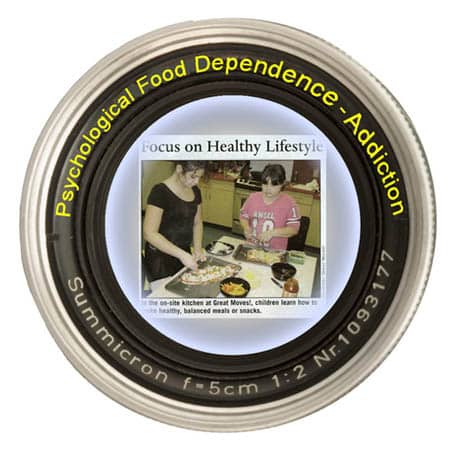 A recent comment to “The Childhood Obesity Perfect Storm, Part 6″ post on the Childhood Obesity News blog describes the “Go, Slow, Whoa!” widget tool created by the We Can! Program of NHLBI, NIH. The widget’s purpose is to impact childhood obesity. It differentiates foods according to their nutritional value, in order to help kids make healthier food choices. The tool’s categories are as follows:
A recent comment to “The Childhood Obesity Perfect Storm, Part 6″ post on the Childhood Obesity News blog describes the “Go, Slow, Whoa!” widget tool created by the We Can! Program of NHLBI, NIH. The widget’s purpose is to impact childhood obesity. It differentiates foods according to their nutritional value, in order to help kids make healthier food choices. The tool’s categories are as follows:
* Go foods (eat almost anytime),
* Slow foods (eat sometimes, or less often), and
* Whoa foods (eat only once in a while, or on special occasions).
The Go, Slow, Whoa! widget tool is similar to Nationwide Children’s Hospital’s “Snackwise®” tool, which differentiates specifically snack foods according to their nutritional value. The goal of the Snackwise system is to help parents and schools make better choices about which snacks to place in school vending machines.
There are many worthwhile childhood obesity programs and tools like the WeCan! program, the GoSlowWhoa! widget tool, and the Snackwise tool. However, emerging new evidence points to a serious dependence (addiction) on highly pleasurable foods as a significant cause of the childhood obesity epidemic. Perhaps such childhood obesity programs and tools should thus be examined through a “psychological food dependence-addiction lens” (above). The question should be asked: “Do such programs and tools help psychological food dependence – addiction?” If not, kids may become discouraged when such programs/tools fail to help them lose weight or maintain their weight. Discouraged kids may comfort-eat more and seek help less, another vicious cycle.
The GoSlowWhoa! widget tool, for example, is technologically impressive and on the right track, in terms of the psychological food dependence-addiction lens test. Nevertheless, what is really needed is a tool to differentiate foods according to their addiction potential. Highly pleasurable, addictive comfort foods generally have low nutritional value, but not necessarily so. Ice cream, for example, is one of the most comforting of foods, yet has at least fair nutritional value. Ice cream contains protein, calcium, and vitamins, as well as carbohydrate and fat energy sources. Still, some kids say ice cream is addicting:
From Sabina, Age 16 — 10/28/06
Ht. 5’6, Wt. 157 — i was so bad today. I had been really good for almost two weeks then my mom bought … ice cream. .. the damn icecream was what nearly killed me. I have the worst addiction to strawberry icecream…From Claire, Age 18 — 5/29/07
Ht. 5’4″, Start: 210 lb, Current: 162 lb, Goal: 130 lb — … I put a little ice-cream (about 2 scoops) in a small bowl and then after that I began craving more and I tried to stop myself but I just found myself going back to the freezer and puting in 2 more scoops this time bigger. I mean what the freak is my problem? I hate how sugar is so addictive…
Furthermore, food companies tend to embellish nutritious foods with sugar, salt, and fat to render them irresistible, so they sell more. Those foods may still be marketed as “health foods” and may not fall out with a tool such as the GoSlowWhoa! widget. Fiber One bars are an example, laden with chocolate, sugar, and salt. One bar provides 35% of daily fiber requirements, but each bar contains 140 calories. Moreover, chocolate is the second top listed ingredient, behind chicory root extract (fiber). Sugar is listed twice, along with high maltose corn syrup and maltodextrin, a sugar with a particularly high glycemic index level, as well as fructose.
If the GoSlowWhoa! widget tool were redesigned as an addictive-food differentiation tool, the categories might be relabeled as follows:
* Go foods – not addictive (eat almost anytime, as much as you want),
* Slow foods – slightly addictive (eat less often, and in moderation), and
* Whoa foods – moderately to highly addictive (eat rarely, only at special events, and only in small amounts).
Then there is the Stop Light Diet developed by Dr. Leonard Epstein, which divides foods by the colors of a traffic signal according to caloric value: green for low-calorie foods that can be eaten freely; yellow for moderate-calorie foods that can be eaten occasionally; and red for high-calorie foods that should be eaten rarely. The Stop Light Diet could likewise be adapted according to dependence risk of foods. “Red” foods would be the most addictive foods. “Green” would be the least addictive foods. “Yellow” would be foods in between. This system could be used both as a guide for treatment of overweight kids and for government regulation of addictive foods, taxation, and access by children. Red, green, or yellow labels could be required by law on all food packages and menu items.
You might say, “Well, how the heck are we going to determine which foods are addictive in order to implement such an addictive-food differentiation tool?” Just ask kids. Which foods do overweight kids have the most problem with? You’ve probably guessed that broccoli is not on the list.
Your responses and feedback are welcome!
Source: “We Can! Mini Widget,” Widgetbox, 06/21/10
Source: “Maltodextrin, Splenda, and the Glycemic Index,” Big Daddy D’s LowCarbohydrate blog, 08/29/07
Image of “Focus on Healthy Lifestyle” is from Pediatric News, used under Fair Use: Reporting.

 FAQs and Media Requests:
FAQs and Media Requests: 











